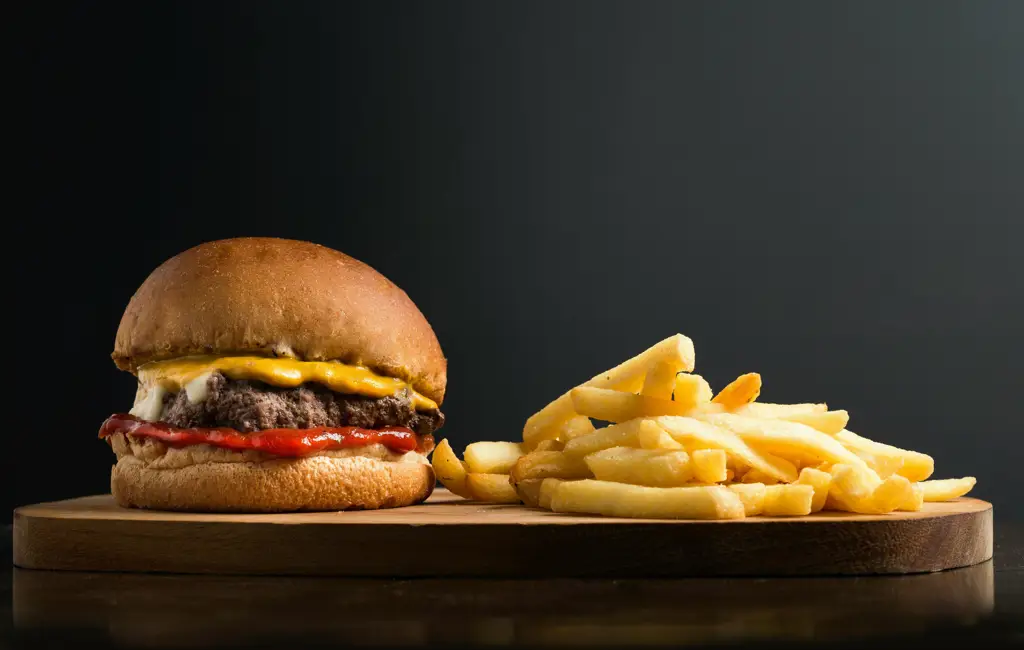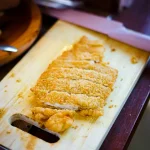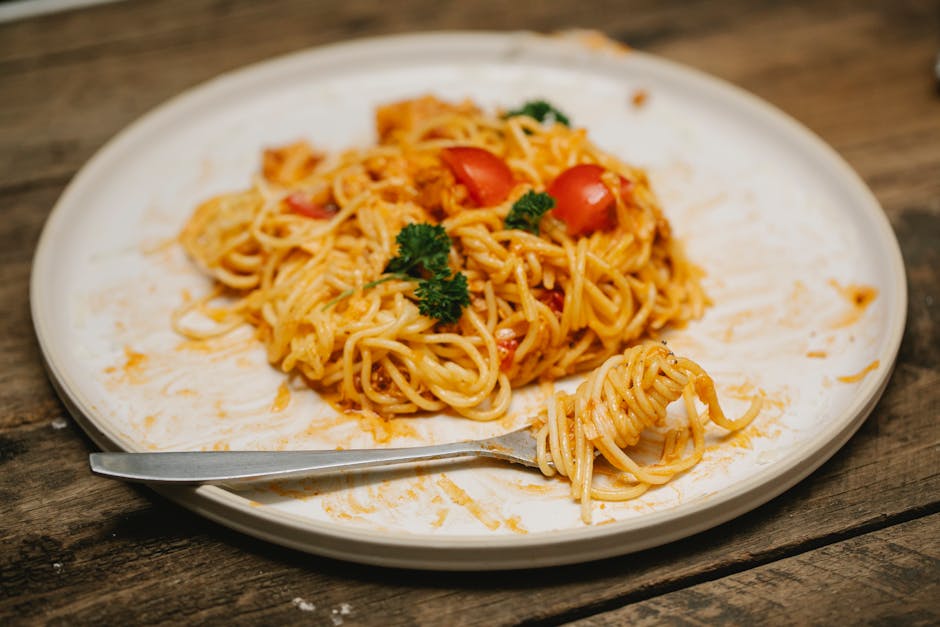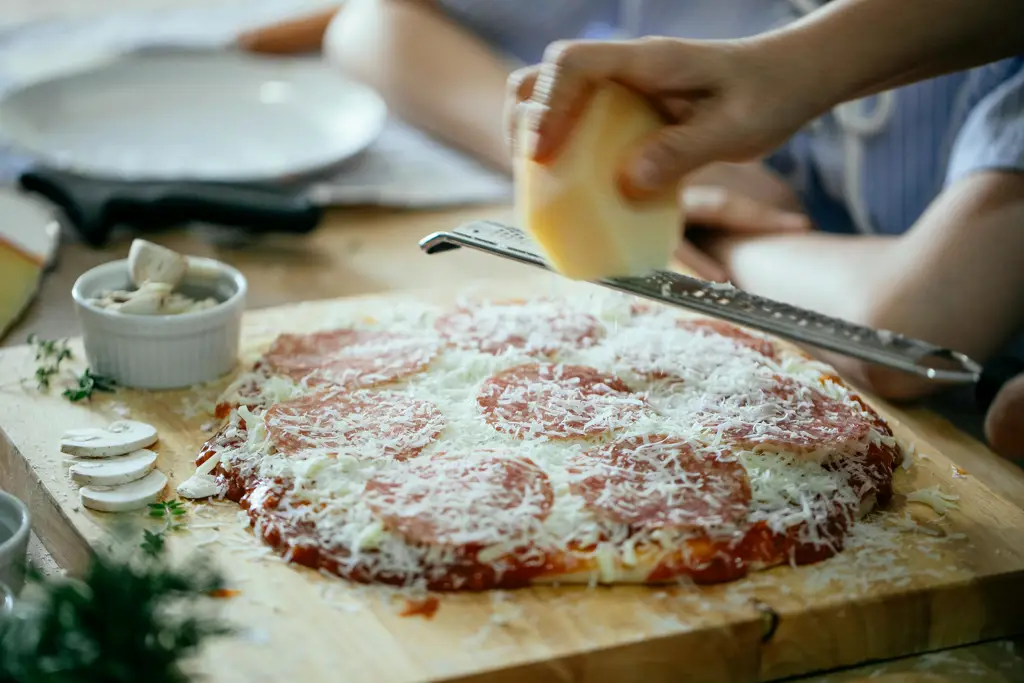Beef ragu, a culinary cornerstone of Italian cuisine, is far more than just a simple meat sauce. Its rich history stretches back centuries, entwined with the evolution of Italian cooking and reflecting the country’s diverse regional identities. While pinpointing its exact origins is difficult, Bologna, in the Emilia-Romagna region, is widely considered its birthplace. This area, known for its fertile plains and abundant livestock, provided the perfect ingredients for this hearty and flavorful stew. Early versions likely involved simpler techniques, focusing on readily available ingredients and slow cooking over open fires – a testament to the resourcefulness of Italian home cooks throughout history. The slow cooking process, a hallmark of the dish, is essential to developing the deep, complex flavors that define a truly exceptional ragu.
The evolution of beef ragu is intrinsically linked to the availability of ingredients and evolving culinary practices. The addition of tomatoes, a crucial element in modern ragu, only became widespread after the 16th century, with their introduction from the Americas dramatically altering the landscape of Italian cooking. Before tomatoes, other ingredients like mushrooms, onions and herbs filled the role of providing depth of flavor and body. The recipe, therefore, wasn’t static; it adapted and changed based on regional variations and seasonal availability, leading to the countless variations we see today. This adaptability is a testament to the enduring appeal of the dish and its ability to integrate local flavors and traditions.
Today, beef ragu remains a beloved staple across Italy and the world. It’s estimated that over 80% of Italian households prepare some variation of ragu at least once a month, highlighting its enduring popularity within Italian culture. Beyond its everyday presence in homes, it also holds a significant place in Italian culinary traditions, often served with classic pasta shapes like tagliatelle, pappardelle, or rigatoni. Furthermore, the meticulous preparation and lengthy cooking process associated with a good ragu reflect a deeper cultural appreciation for taking time and care in the creation of food, a practice that emphasizes family, tradition, and the sharing of a delicious meal. Its cultural significance extends beyond Italy; its rich flavors and comforting nature have made it a global favorite, appreciated for its versatility and ability to evoke a sense of warmth and nostalgia.
Beyond the cultural significance, there are fascinating facts about the making of ragu. For example, the use of red wine is crucial for adding depth and complexity to the sauce, while the gradual addition of ingredients ensures that each component develops its full flavor potential. The slow simmering process, often lasting several hours, allows the connective tissues in the beef to break down, resulting in a tender and richly flavored sauce. This commitment to time-consuming preparation is part of what makes a truly outstanding beef ragu so rewarding, transforming a simple dish into a culinary masterpiece.
Ingredients and Measurements
Creating a truly exceptional beef ragu hinges on the quality and precise measurement of your ingredients. Don’t be tempted to skimp on quality here; the depth of flavour will directly reflect your choices. This recipe yields approximately 6-8 servings of rich, flavourful ragu.
Beef: We’ll be using 1.5 lbs (680g) of beef chuck, cut into 1-inch cubes. Chuck is ideal because it’s a relatively inexpensive cut with plenty of connective tissue, which breaks down during the long simmering process, resulting in a wonderfully tender and flavorful ragu. Avoid using leaner cuts like sirloin or tenderloin, as they’ll become dry and tough. If you prefer a richer, fattier ragu, you can increase the beef fat slightly.
Aromatics: The foundation of any great ragu lies in its aromatics. We’ll need 1 large yellow onion, finely chopped; 2 carrots, peeled and finely diced; 2 celery stalks, finely diced. This classic combination, known as a mirepoix, provides a subtle sweetness and savory base. Ensure your vegetables are finely chopped to allow them to cook evenly and release their flavours fully. Don’t be afraid to use a food processor for a consistent chop, but be mindful not to puree them.
Liquid: The liquid component is crucial for achieving the perfect consistency. We’ll use 1 (28 ounce) can of crushed tomatoes, 1 (15 ounce) can of tomato puree, and 1 cup (240ml) of dry red wine. The red wine adds a significant layer of complexity, so choose a wine you’d enjoy drinking. A Chianti or a Merlot would work well. If you prefer to omit the alcohol, you can substitute with an equal amount of beef broth.
Seasoning & Herbs: Don’t underestimate the power of seasoning! We’ll need 2 tablespoons of olive oil, 2 teaspoons of dried oregano, 1 teaspoon of dried basil, 1 teaspoon of salt, 1/2 teaspoon of black pepper, and a pinch of red pepper flakes (optional, for a touch of heat). Adjust the seasoning to your taste throughout the cooking process. Fresh herbs can be substituted for dried, but use approximately half the amount.
Other Ingredients: To add depth and richness, we’ll incorporate 2 cloves of garlic, minced; 1 tablespoon of tomato paste; and 1 bay leaf. The garlic adds a pungent aroma, while the tomato paste intensifies the tomato flavour. The bay leaf contributes a subtle, earthy note that complements the other ingredients. Remember to remove the bay leaf before serving, as it can be tough and unpleasant to consume.
Optional additions: For an even richer and more complex ragu, consider adding 1/2 cup of chopped mushrooms, a few sprigs of fresh rosemary, or a tablespoon of Worcestershire sauce. These additions can significantly enhance the flavour profile, but are not essential.
Preparation of Ingredients
Before you begin assembling your delicious beef ragu, meticulous preparation of the ingredients is key to achieving a rich and flavorful result. This stage sets the foundation for the entire dish, so take your time and pay attention to detail.
We’ll start with the vegetables. For this recipe, we’ll use 1 large onion (about 200g), 2 carrots (approximately 150g), and 2 celery stalks (about 100g). Begin by peeling the onion and carrots thoroughly. Use a sharp vegetable peeler to remove the outer layers efficiently. For the celery, remove any stringy outer parts. A sharp knife is crucial here; dull knives will crush the vegetables, releasing more moisture and resulting in a less desirable texture in the final ragu.
Next, chop the vegetables into roughly the same size pieces. Aim for a consistent ½-inch dice. This ensures even cooking and prevents some vegetables from becoming mushy before others are tender. Start by thinly slicing the onion, then dice it. Follow the same process for the carrots and celery. Consistency in size is important for even cooking and texture. Don’t worry about being perfectly precise; a rough dice is perfectly acceptable.
Now, let’s address the star of the show: the beef. This recipe calls for 1 lb (450g) of beef chuck, cut into 1-inch cubes. Chuck is an ideal cut for ragu because it’s relatively inexpensive, flavorful, and contains enough connective tissue to break down and create a rich, tender sauce during the long simmering process. Ensure the beef is cut into uniformly sized cubes to ensure even browning and cooking. Unevenly sized pieces will result in some being overcooked and others undercooked.
Browning the beef is a crucial step that adds depth of flavor to the ragu. Season the beef cubes generously with salt and freshly ground black pepper. Heat 2 tablespoons of olive oil in a large, heavy-bottomed pot or Dutch oven over medium-high heat. Work in batches to avoid overcrowding the pot; overcrowding will lower the temperature and result in steaming rather than browning. Brown the beef cubes on all sides, ensuring a nice crust develops. This will take about 5-7 minutes per batch. Remove the browned beef from the pot and set aside.
Important Note: Don’t be tempted to overcrowd the pot while browning. Work in batches to ensure proper browning. This step significantly contributes to the overall flavor profile of your ragu.
Once all the beef is browned, you can proceed to sauté the vegetables in the same pot, using any rendered beef fat left behind. This step further enhances the flavor and aroma of your ragu. Remember to scrape the bottom of the pot to deglaze it, collecting all those delicious browned bits that stick to the bottom and sides, further enriching the sauce. This process is complete once the vegetables are softened, about 5-7 minutes.
With your vegetables sautéed and your beef browned, you’re ready to move on to the next stage of making your beef ragu: building the sauce.
Cooking the Beef Ragu (including searing, simmering times, and liquid management)
Now that we’ve prepared our ingredients, let’s dive into cooking the heart of our ragu: the beef. We’ll begin by searing the meat to develop a rich, deep flavor and beautiful color. For this recipe, we’re using 1.5 lbs of beef chuck, cut into 1-inch cubes. Pat the beef cubes dry with paper towels; this is crucial for achieving a good sear. Season generously with 2 teaspoons of kosher salt and 1 teaspoon of freshly cracked black pepper.
Heat 2 tablespoons of high-smoke-point oil (like canola or grapeseed) in a large, heavy-bottomed Dutch oven or pot over medium-high heat. Work in batches to avoid overcrowding the pot, which will lower the temperature and result in steaming instead of searing. Sear the beef cubes on all sides until nicely browned, about 3-4 minutes per side. Remove the seared beef from the pot and set aside.
Once the beef is seared, we’ll build the flavor foundation of our ragu. Add 1 large chopped onion (about 1 cup), 2 carrots, peeled and chopped (about 1 cup), and 2 celery stalks, chopped (about 1 cup) to the pot. Cook until softened, about 5-7 minutes, stirring occasionally. Don’t rush this step; properly softening the vegetables is key to a flavorful ragu. Add 3 cloves of minced garlic and cook for another minute until fragrant.
Now, it’s time to deglaze the pot. Pour in 1 cup of dry red wine (like Chianti or Cabernet Sauvignon), scraping up any browned bits from the bottom of the pot. This is where a lot of the flavor resides! Let the wine simmer for a few minutes until it reduces slightly. Next, add 28 ounces (one 28-ounce can) of crushed tomatoes, 15 ounces of tomato puree, 1 teaspoon of dried oregano, 1/2 teaspoon of dried basil, and a bay leaf. Stir well to combine.
Return the seared beef to the pot. Add 1 cup of beef broth, ensuring the liquid level is about halfway up the beef. Bring the mixture to a simmer, then reduce the heat to low, cover the pot, and let it simmer gently for at least 2.5-3 hours, or up to 4 hours for an even richer flavor. The longer it simmers, the more tender and flavorful the beef will become.
Liquid Management is crucial: Throughout the simmering process, monitor the liquid level. If it becomes too low, add more beef broth, a splash of water, or even some red wine as needed. You want the ragu to be simmering gently, not boiling fiercely. The goal is a rich, thick sauce, not a watery stew.
After 2.5-4 hours, check the beef for tenderness. It should be fork-tender. If not, continue simmering for another 30 minutes to an hour. Once the beef is tender, remove the bay leaf and taste the ragu. Adjust seasoning with salt and pepper as needed. If you prefer a thicker sauce, you can simmer it uncovered for another 15-20 minutes to reduce the liquid further.
Reducing and Thickening the Sauce
Once your beef ragu has simmered for the prescribed time (typically 2-3 hours, or even longer for a deeper, richer flavor), the next crucial step is reducing and thickening the sauce. This process concentrates the flavors and creates a luscious, clinging sauce that perfectly coats the pasta. The goal is a sauce that is thick enough to cling to the pasta, but not so thick that it’s pasty.
Begin by assessing your sauce. If it’s quite thin, you’ll need to reduce it significantly. Increase the heat to medium-high. The larger surface area of the pan exposed to the heat will help the liquid evaporate more quickly. Allow the sauce to simmer uncovered, stirring occasionally to prevent scorching. Avoid boiling, as this can lead to a grainy texture and the evaporation of delicate flavors. The reducing process can take anywhere from 15 to 30 minutes, depending on the initial volume and desired consistency.
As the sauce reduces, you’ll notice it becoming thicker and its color deepening. This is a sign that the flavors are concentrating. Taste the sauce frequently and adjust the seasoning as needed. You might need to add a pinch more salt, pepper, or a touch of sugar to balance the acidity of the tomatoes.
If, after reducing, your sauce still isn’t thick enough, you have several options for thickening. One classic method is to make a roux. In a separate small saucepan, melt 2 tablespoons of butter over medium heat. Whisk in 2 tablespoons of all-purpose flour and cook for 1-2 minutes, stirring constantly, until the mixture is smooth and bubbly. This creates a light brown roux. Gradually whisk the roux into the simmering ragu, a little at a time, ensuring it’s fully incorporated before adding more. Continue to simmer for another 5-10 minutes, stirring occasionally, allowing the roux to thicken the sauce.
Another excellent option is to use tomato paste. A tablespoon or two of tomato paste added at the end of the simmering process can significantly boost the thickness and depth of flavor. Stir it in thoroughly and let it simmer for a few minutes to meld with the other flavors.
For a naturally thicker sauce, consider adding a small amount of pureed vegetables, such as carrots or even a few tablespoons of cooked and pureed mushrooms. This adds subtle flavor complexity while also providing thickening power.
Important Note: Over-thickening can result in a pasty, unappealing sauce. It’s always better to err on the side of slightly thinner and adjust as needed. Remember to taste-test frequently throughout the process to ensure you achieve the perfect balance of flavor and consistency. Once you’ve reached your desired thickness, remove the ragu from the heat and let it rest for at least 15 minutes before serving. This allows the flavors to meld and deepen further.
Serving Suggestions (including pasta types, garnishes)
Your rich and flavorful beef ragu deserves a pasta that can stand up to its robust character. Avoid delicate pastas like angel hair or capellini; these will be overwhelmed by the sauce. Instead, opt for heartier shapes that will nicely coat in the ragu and provide a satisfying textural contrast.
Ideal Pasta Choices: For a classic pairing, choose tagliatelle (about 1 pound for 4 servings), its broad ribbons perfectly capturing the ragu. Alternatively, pappardelle (also about 1 pound for 4 servings), with its even wider, flatter shape, offers a luxurious feel. Rigatoni (about 12-14 ounces for 4 servings) is another excellent choice, its ridges providing extra surface area for the sauce to cling to. Even short, tubular pastas like penne (about 12-14 ounces for 4 servings) work well, ensuring every bite is packed with flavor.
Cooking the Pasta: Remember to cook your pasta al dente, meaning firm to the bite. Don’t overcook it, as this will result in mushy pasta that doesn’t hold its shape. Reserve about 1 cup of the starchy pasta water before draining; this is crucial for creating a creamy, cohesive sauce when you combine it with the ragu.
Garnish and Enhancements: A simple garnish can elevate your dish from good to unforgettable. A generous grating of Parmigiano-Reggiano cheese (about 1/2 cup for 4 servings), added directly to the pasta and ragu, adds a sharp, salty counterpoint to the richness of the meat. Freshly grated Pecorino Romano (about 1/4 cup for 4 servings) offers a more pungent, slightly salty option.
Adding Fresh Herbs: A sprinkle of freshly chopped parsley (about 2 tablespoons for 4 servings) adds a bright, herbaceous note. Similarly, a few leaves of fresh basil (about 6-8 leaves for 4 servings), torn by hand, provide a fragrant and slightly peppery accent. Avoid adding these herbs too early in the cooking process, as they can lose their vibrancy.
Optional additions for extra flavor: Consider a drizzle of high-quality extra virgin olive oil (about 1 tablespoon for 4 servings) after serving to add richness and shine. A pinch of red pepper flakes can add a touch of heat for those who prefer a spicier dish. For a more luxurious presentation, you can garnish with a few roasted cherry tomatoes or a small amount of freshly shaved black truffle (use sparingly, as it’s quite expensive!).
Presentation: Serve immediately after combining the pasta and ragu. A simple, elegant presentation is key. Avoid overcrowding the plates. A sprinkle of cheese and herbs on top will complete the look and add a final touch of flavor. Remember, the beauty of a good beef ragu lies in its simplicity and the quality of the ingredients.
Important Note: Taste and adjust seasoning as needed before serving. The saltiness of the cheese should be considered when seasoning the ragu itself.
Tips and Tricks for Best Results
Crafting a truly exceptional beef ragu requires attention to detail and a few key techniques. While a basic recipe provides a solid foundation, these tips and tricks will elevate your ragu from good to unforgettable.
Wine Selection: The choice of wine significantly impacts the ragu’s flavor profile. Opt for a dry red wine with robust tannins and acidity, such as a Cabernet Sauvignon, Merlot, or Chianti. Avoid overly sweet or fruity wines, as they can overpower the savory notes of the beef. Use approximately 1 cup (240ml) of wine, allowing it to reduce and concentrate its flavor during the cooking process. Don’t be afraid to let the wine simmer uncovered for 10-15 minutes to reduce it down to a syrupy consistency before adding the tomatoes. This step intensifies the wine’s flavor and creates a richer sauce.
Slow Cooking Magic: Low and slow is the key to tender, melt-in-your-mouth beef. A slow cooker or Dutch oven is ideal. The long, gentle cooking process breaks down the connective tissues in the beef, resulting in an incredibly tender and flavorful ragu. Aim for at least 2-3 hours on low in a slow cooker, or 2.5-3 hours in a Dutch oven at a low simmer on the stovetop. If you’re using a Dutch oven, you can start with a slightly higher heat to brown the meat, then reduce the heat for braising. Remember to check the ragu’s consistency regularly and add a little water or broth if it becomes too thick.
Beyond the Basics: While tomatoes are essential, adding other vegetables adds depth and complexity. Finely diced carrots (1 large carrot, about 1 cup diced), celery (2 stalks, about 1 cup diced), and onions (1 large onion, about 1 cup diced) form a classic mirepoix, providing a sweet and savory base. Sauté these vegetables before adding the meat for a richer flavor. Consider adding a teaspoon or two of tomato paste to deepen the tomato flavor.
Meat Matters: The quality of your beef greatly influences the final product. Choose a cut of beef that’s well-suited for braising, such as chuck, short ribs, or beef shank. These cuts contain more connective tissue, which breaks down beautifully during the long cooking process. Cut the beef into 1-inch cubes for even cooking. Proper browning is crucial; this step develops rich flavor and color. Don’t overcrowd the pan when browning – work in batches to ensure proper browning on all sides of the beef cubes.
Seasoning is Key: Don’t skimp on seasoning! Generously season the beef with salt and freshly ground black pepper before browning. Consider adding other herbs and spices, such as bay leaves (2-3), dried oregano (1 teaspoon), or a pinch of red pepper flakes for a touch of heat. Taste and adjust seasoning throughout the cooking process. Remember to season the sauce itself at the end, adjusting the salt and pepper to your liking.
Finishing Touches: Before serving, remove any excess fat from the surface of the ragu. Stir in a tablespoon or two of butter for richness and a glossy finish. Serve your delicious beef ragu over your favorite pasta, polenta, or even mashed potatoes. Enjoy!
Recommendations for Your Delicious Beef Ragu
To elevate your beef ragu experience, consider these recommendations. Proper preparation is key to achieving the rich, deep flavor this dish is known for. Allowing the ragu to simmer for a longer period, even up to 3-4 hours, will allow the flavors to meld beautifully, resulting in a more intense and complex taste. Don’t be afraid to experiment with different cuts of beef; chuck roast, short ribs, or even a combination, offer unique textures and flavor profiles. Remember to brown the beef thoroughly before adding it to the sauce; this step is crucial for developing a deep, savory flavor.
Wine selection plays a significant role. A full-bodied red wine, such as Cabernet Sauvignon or Chianti, will complement the richness of the ragu wonderfully. However, feel free to explore other options depending on your preference. Adding a splash of red wine vinegar towards the end can also add a delightful tanginess that cuts through the richness of the meat and tomatoes.
Seasoning is paramount. Don’t be shy with the salt and pepper. Fresh herbs, such as rosemary, thyme, and bay leaves, add depth and complexity. A pinch of red pepper flakes can introduce a subtle heat, while a touch of sugar can balance the acidity of the tomatoes. Taste the ragu frequently throughout the cooking process and adjust the seasoning accordingly. Remember, the perfect seasoning is subjective, so tailor it to your taste buds.
Serving suggestions are endless. The classic pairing is with fresh pasta, such as tagliatelle, pappardelle, or rigatoni. However, you can also serve it over polenta, gnocchi, or even mashed potatoes for a heartier meal. A sprinkle of freshly grated Parmesan cheese adds a salty, umami richness that perfectly complements the ragu. A drizzle of high-quality olive oil adds a touch of elegance and enhances the overall flavor profile.
Storage is important to maintain quality. Allow the ragu to cool completely before storing it in airtight containers in the refrigerator. It can be stored for up to 4 days. For longer storage, freeze the ragu in portions suitable for individual meals. It can be frozen for up to 3 months. When reheating, do so gently over low heat to prevent scorching and maintain the texture.
Complementary dishes can enhance the overall dining experience. A simple side salad with a light vinaigrette can provide a refreshing contrast to the richness of the ragu. Garlic bread or crusty bread can be used to soak up the delicious sauce. Consider serving a side of roasted vegetables, such as asparagus or broccoli, to add some color and nutritional balance to the meal.
Nutritional Information (per serving, approximate values): The nutritional content will vary significantly depending on the specific ingredients and quantities used, but a typical serving of beef ragu might contain approximately 400-500 calories, 25-35g of protein, 20-30g of fat, and 20-30g of carbohydrates. This is a rough estimate, and it’s important to note that the fat and calorie content will increase significantly if you use a lot of cheese or cream. For more precise nutritional information, use a nutrition calculator and input your specific ingredients and quantities.





